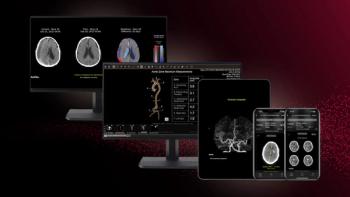
Nuclear medicine experts dominate national panel
Report to address trends that threaten future development of isotopes and instrumentation
Report to address trends that threaten future development of isotopes and instrumentation
The nuclear medicine community is well represented on a National Academy of Sciences panel tasked with preparing a $750,000 report on trends affecting the specialty.
Thirteen of the 15 panelists are nuclear physicians, nuclear physicists, or radiologists closely associated with nuclear medicine practice. Two other panelists are radiation oncologists.
Dr. Hedvig Hricak, radiology chair at Memorial Sloan-Kettering Cancer Center in New York City, heads the committee. Members include Dr. Peter Conti, immediate past president of the Society of Nuclear Medicine; Dr. Heinrich Schelbert, editor-in-chief of the Journal of Nuclear Medicine; Joanna S. Fowler, Ph.D., director of PET research at Brookhaven National Laboratory; Dr. C. Douglas Maynard, former radiology director at Wake Forest University in Winston-Salem, NC; and Dr. Gustav Von Schulthess, a professor of nuclear medicine at University Hospital of Zurich, Switzerland.
"We have very good representation," said Conti, speaking at the Society of Nuclear Medicine meeting in June.
The panel is examining trends, such as declining recruitment and decreasing funds for research, that supporters say could doom the subspecialty and deny patients access to imaging and therapy. The situation became dire in 2005, when the Department of Energy cut $23 million from its budget for basic nuclear medicine research and ended its 50-year association with the nuclear medicine community.
The DOE's action raised concerns about the recruitment and training of nuclear physicists to specialize in radioisotope and instrumentation development as well as financial support for their scientific investigations. DOE-sponsored national laboratories have also been important sources of rare radioisotopes for cancer therapy.
"The cuts really put us in a very difficult spot in terms of basic science," Conti said.
The merits of restoring DOE funding are outside the scope of the NAS study, however, according to Hricak.
"It is strictly a scientific review. It is not about money, funding, and the agencies," she said.
By mid-September, two of six data-gathering sessions had been held. Publication of the panel's report is expected by July 2007.
Newsletter
Stay at the forefront of radiology with the Diagnostic Imaging newsletter, delivering the latest news, clinical insights, and imaging advancements for today’s radiologists.




























